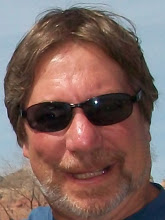http://donatelifeohio.org/
Maybe it was because he had been asked a million times but Joe could recall every detail of his debut when Bill McKechnie called his name to pitch against the St. Louis Cardinals. He got the two of the first three batters out then didn't record another out for eight years.
"I looked up and all of sudden realized that was Stan Musial in the batters' box," Nuxhall said.
George Fallon grounded out to Eddie Miller at shortstop to open that ninth inning with the Cardinals ahead 13-0. Mort Cooper, the pitcher walked. Audie Bergamo popped to short then the wheels fell off.
Deb Garms walked. Musial singled. Ray Sanders, Walker Cooper and Danny Litwhiler walked. Emil Verban singled. McKechnie brought Jake Eisenhart to get the final out.
 |
| http://www.wiedemannbeer.com/ |
Nuxhall went to Birmingham to pitch that summer, then back to Hamilton to finish high school. Nuxhall pitched in six minor league cities until he returned to the Reds.
His next game was a three inning relief stint in a 19-1 Reds' loss at Ebbets Field in Brooklyn. Nuxhall pitched three scoreless innings to close out the game.
From History Channel.
On June 10, 1944, 15-year-old Joe Nuxhall becomes the youngest person ever to play Major League Baseball when he pitches in a game for the Cincinnati Reds. Nuxhall threw two-thirds of the ninth inning in an 18-0 loss to the St. Louis Cardinals; he was pulled only after one wild pitch and allowing five runs on five walks and two hits. The game was played during World War II, when it became common for adolescent and older players to fill in for big leaguers fighting overseas.
In 1942, after the Japanese attack on Pearl Harbor, President Roosevelt wrote to Baseball Commissioner Kenesaw Mountain Landis to ask that baseball continue even though the United States was going to war: "I honestly feel that it would be best for the country to keep baseball going. There will be fewer people unemployed and everybody will work longer hours and harder than ever before. And that means they ought to have a chance for recreation and for taking their minds off their work even more than before." Landis obliged, and play continued even as the stars of the era left to enroll in the armed forces. Detroit Tigers first baseman Hank Greenberg was among the players who had enlisted even before 1941, in the prime of his Hall of Fame career. After the 1942 season, more than 500 big league players enlisted, including stars Ted Williams, Joe DiMaggio, Bob Feller, Dom DiMaggio and Pee Wee Reese.
Meanwhile, the major leagues had to make do with whoever was available, and the 15-year-old Nuxhall was just one of many new players who normally wouldn’t have come close to a shot at the big leagues. Others included Pete Gray, a one-armed outfielder who hit .218 and drove in 13 runs in 77 games with the St. Louis Browns in 1945, and 16-year-old Carl Scheib, who pitched for the Philadelphia A’s in 1943. Eighteen-year-old Vern Benson got to hit twice for the A’s that year, while 17-year-old Cass Michaels began his 12-year major league career many years ahead of schedule playing third base for the White Sox. Older players also got in on the act: Mike Ryba and Al Simmons were among the former major leaguers who returned to fill in for their younger counterparts overseas.
As for Nuxhall, though the June 10 outing was his only appearance in 1944, he rejoined the Reds in 1952 when he was 23 years old and pitched 15 seasons in the big leagues. He ended his career with a 135-117 record and a 3.90 ERA.



No comments:
Post a Comment